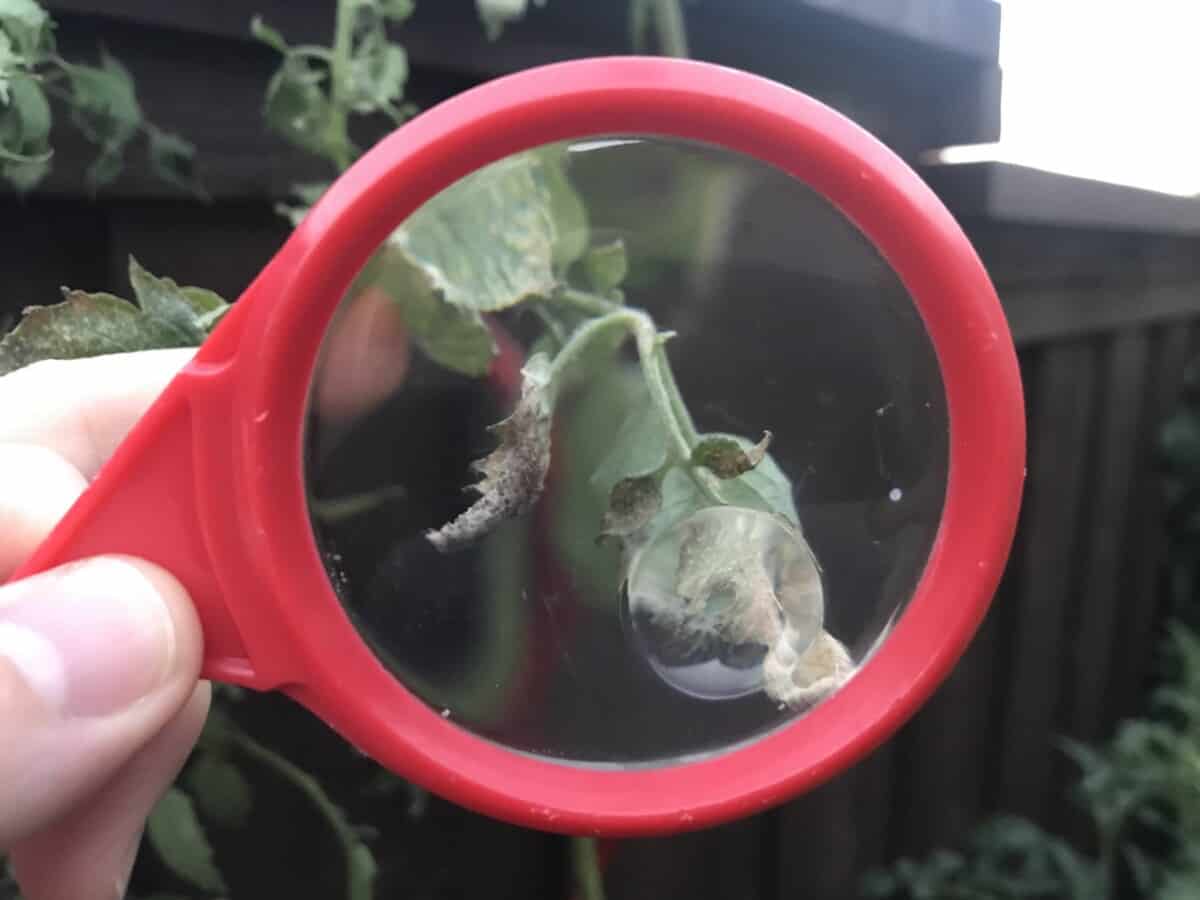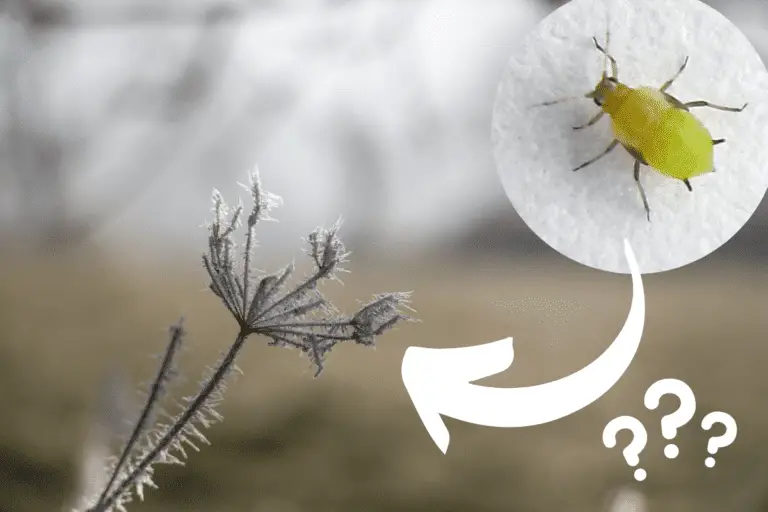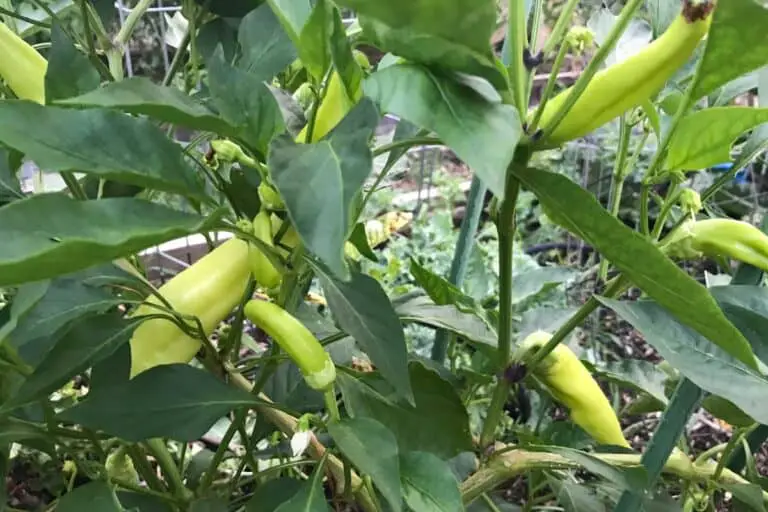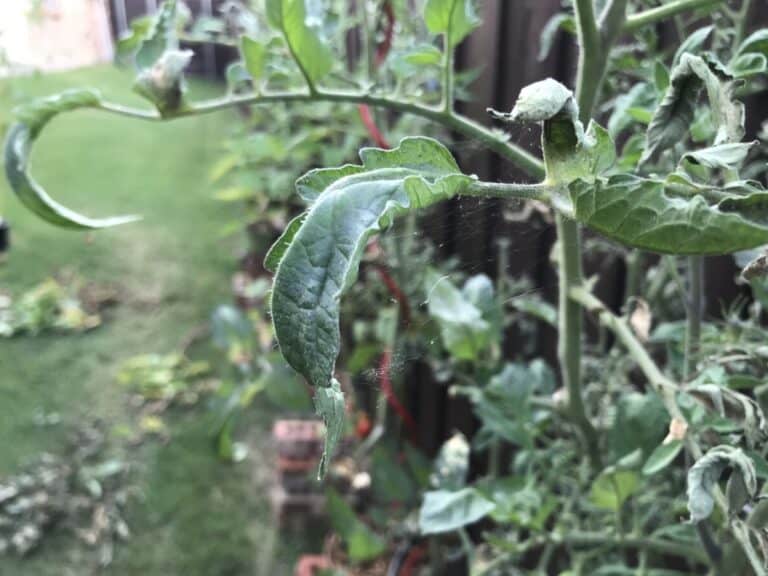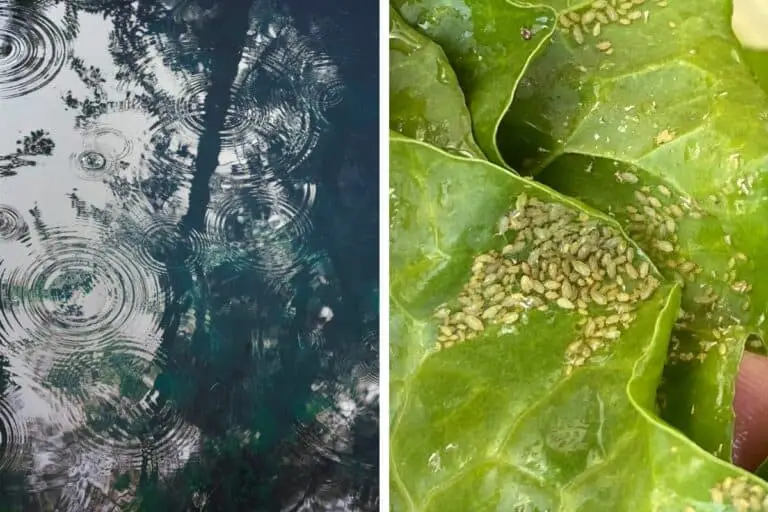What Plants Do Spider Mites Like, and What Do They Hate?
During the past few months, I’ve been writing extensively about spider mites, trying to share what I’ve learned over the years with other gardeners who are battling these tiny pests.
One of the reasons I’m so interested in them is that they seem both inevitable and unavoidable: Every gardener I know–from novices to experts–has had to fight off a spider mite infestation at one point or another. If you haven’t yet encountered them yet, you likely will in the years to come.
Surprisingly, as I’ve noted in this article about where spider mites come from, spider mites were once a relatively unknown nuisance. But with the rise of the global economy over the past 100 years, they’ve spread quickly across the world, adapting to new regions and climates and developing immunity to various pesticidal products that were designed to eliminate them.
In search of chlorophyll, their primary food source, spider mites will feed on the cellular structures of literally hundreds of plant species, from fruits and vegetables to flowers, shrubs, and trees. Their favorite garden plants include cucumbers, eggplants, melons, peas, squash, tomatoes, and strawberries.
Given the many run-ins I’ve had with spider mites, I started to give more thought to how I might create a more spider-mite-resistant garden. This got me thinking about two related questions:
Because spider mites are such a global nuisance–and in order to create garden beds that are as spider mite repellant as possible–I’ve grown convinced that the best way to do so is to practice a very specific form of companion planting: interspersing plants that spider mites like among plants that they hate or that seem relatively immune to their attacks.
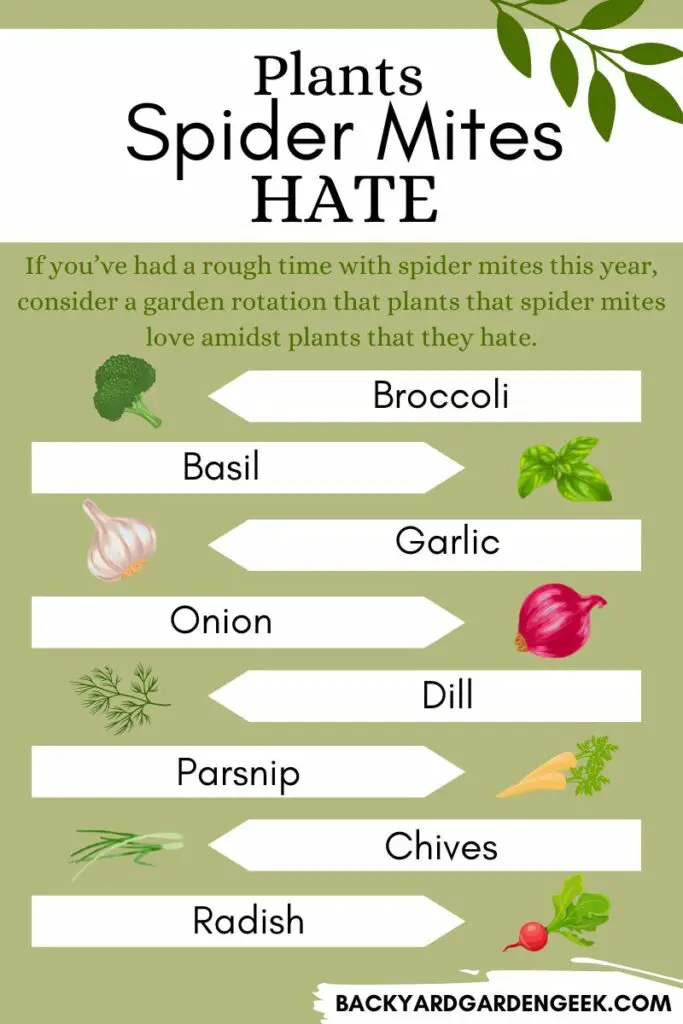
In fact, I tried this approach this year with one 4×10 garden bed. I mulched much more than I usually do to ensure the bed didn’t dry out, and I purposefully planted varieties that tend to be spider mite magnets next to varieties that spider mites don’t seem to care much about.
(If you’d like to see the results, please keep reading below!)
Long story short, the experiment was a great success. Spider mites arrived and heavily infested one plant (a large cherry tomato plant), but the plants that surrounded the infested plant did their job, providing a helpful barrier of sorts between the infested cherry tomato plant and the tomato plants that were planted on the other side of the bed. This kept the spider mites at bay while I began my spider mite treatment plan, which I describe in detail in these two articles:
What Plants Do Spider Mites Like?
Before you can adopt this specific form of companion planting, you’ve got to understand which plants are most susceptible to spider mite infestations.
As researchers have noted, spider mites–which look like spiders but are more closely related to ticks–are voracious pests that spread quickly to other plants and feed indiscriminately on whatever foliage they can find, including that of 200+ different plant species. They will attack both indoor and outdoor plants, damaging the leaves of hardy houseplants as well as the wispier foliage of many popular garden varieties.
What you’ll find below is my attempt to compile as comprehensive a catalog as possible of the garden plants that spider mites like–as well as a companion catalog of plants that spider mites hate and those that serve as spider mite trap crops–in an effort to better understand their feeding patterns and to provide helpful suggestions for gardeners who are interested in learning how to repel spider mites and stop infestations before they get out of control.
I’ve broken down my list of spider mite favorites into three relatively general categories:
- Vegetables, Berries, and Herbs
- Shrubs, Flowers, and Houseplants
- Trees
I could have created different categories based on scientific taxonomies, but I’m less interested in precise classifications than I am in providing helpful, easy-to-read lists of plants that spider mites both like and dislike. I’ve included a few taxonomic labels below if they’re commonly used by gardeners and plant enthusiasts.
Personally, I think my list involving plants spider mites don’t like is most helpful, but I’ll catalogue the list of plants that they like first to give you an overall sense of the varieties most susceptible to spider mite infestations.
Vegetables, Berries, and Herbs
- Artichoke
- Asparagus
- Bean
- Beet
- Blackberry
- Blueberry
- Boysenberry
- Brussel Sprout
- Cabbage
- Cauliflower
- Corn
- Cucumber
- Eggplant
- Gourd
- Lettuce
- Melon
- Parsley
- Pea
- Potato
- Raspberry
- Soybean
- Spinach
- Squash
- Strawberry
- Sweet Potato
- Tomatillo
- Tomato
- Watercress
Shrubs, Flowers, and Houseplants
- Alocasia
- Aspidistra
- Aquilegia
- Azalea
- Camellia
- Brugmansia
- Buddleia
- Cacti
- Camellia
- Chrysanthemums
- Clematis
- Colocasia
- Cyperus
- Daisy
- Datura
- Daylily
- Delphinium
- Dieffenbachia
- Euonymus
- Ficus
- Holly
- Impatiens walleriana
- Ligustrum
- Marigold
- Palms
- Pansy
- Phlox
- Phormium
- Pittosporum
- Primula Vulgaris
- Pyracantha
- Rose
- Rudbeckia
- Salvia
- Shasta
- Spathiphyllum
- Succulent
- Sunflower
- Verbena
- Viburnum
Trees
- Arborvitae
- Amelanchier
- Apple
- Apricots
- Ash
- Black Locust
- Boxwood
- Cedar
- Cherry
- Cypress
- Elm
- Fir
- Hawthorn
- Hemlock
- Juniper
- Maple
- Nectarine
- Oak
- Peach
- Pear
- Pine
- Plum
- Poplar
- Redbud
- Spruce
- Taxus
What Plants Do Spider Mites Hate?
Spider mites feed on literally hundreds of plants–especially the ones listed above–but I’ve noticed several garden favorites that seem to avoid infestations.
Spider mites hate herbs such as anise, basil, caraway, Chinese parsley, and dill. They also dislike members of the Allium genus (chive, onion, garlic, scallion, and shallot), root vegetables (parsnip, radish, rutabaga, and turnip), and cruciferous veggies such as bok choy and broccoli.
But I want to be clear about what I mean by “hate” and “dislike.” I don’t mean that they won’t ever appear on these plants. Spider mites are chlorophyll-seekers, so they’re bound to appear on all kinds of plants at one point or another.
What I mean is that they don’t seem to enjoy these varieties as much as they do the varieties noted earlier in this article. And if they do show up on varieties they hate, they either don’t typically hang around very long or don’t cause much damage.
In the list below, I’ve placed one asterisk beside the varieties that spider mites seem to dislike most and two asterisks besides plants that appear in both lists (for reasons I’ll explain below).
I’ll provide the list first, followed by further observations on the varieties that I’ve labeled with asterisks:
- Anise
- Basil*
- Bok Choy
- Broccoli*
- Caraway
- Carrot
- Celery
- Chamomile
- Chard
- Chinese Parsley
- Chives*
- Chrysanthemum*
- Cinnamon
- Cowpeas / Black-Eyed Peas*
- Dill
- Eggplant**
- Garlic
- Kale
- Kholrabi
- Leek
- Lemongrass
- Marjoram
- Okra*
- Onion
- Parsnip
- Pepper**
- Peppermint
- Radish
- Rhubarb
- Rosemary
- Rutabaga
- Scallion
- Shallot
- Thyme
- Turnip
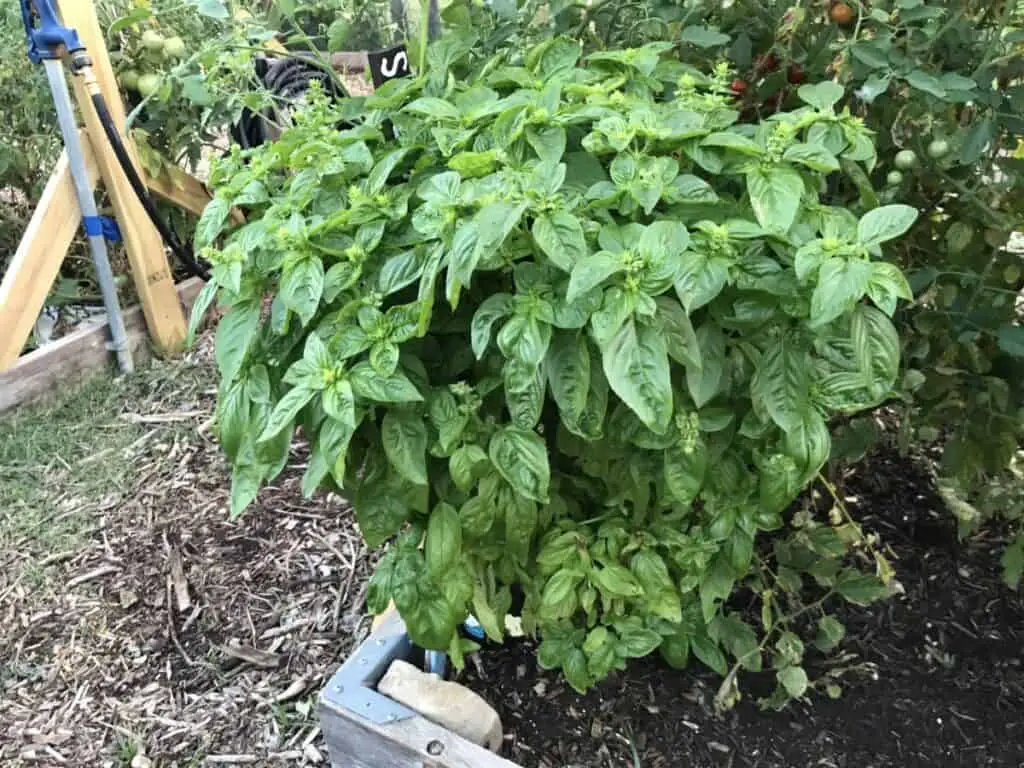
Basil: Basil seems to be impervious to spider mites, even when growing next to a spider mite infested plant.
In fact, I once noticed a basil plant whose leaves were literally rubbing up against those of an infested tomato plant–providing a perfect bridge from the first plant to the second–but the spider mites were entirely uninterested in the basil. At no point in time did they relocate from the tomato plant to the basil.
I’ve seen some references online to spider mites and basil plants, but in my personal experience, I’ve never had this problem. They seem to avoid basil in favor of other preferred plants.
Broccoli: I’ve never had any issues with spider mites and broccoli, but I’ve heard some anecdotal stories from other gardeners about spider mites destroying broccoli plants.
However, I recently read an article about a research team at the University of Western Ontario who claim to have discovered that plants in the brassicaceae family have certain natural biological controls that guard against spider mites. It looks like there needs to be more research on this subject, but I found the article interesting.

Chives: Much like basil, I had chives growing right next to a heavily infested cherry tomato plant. Their stems were literally touching the leaves of the infested plants, but the spider mites didn’t care whatsoever about the chives.
Although I stopped the spider mite infestation on the whole, the infested cherry tomato plant was too damaged to keep, so I uprooted it. The chives kept going strong for months to come, unaffected by the spider mite infestation that had occurred right next to them.
Chrysanthemums: What’s ironic about chrysanthemums is that their foliage is prone to spider mite attacks while their flowers produce a naturally-occurring chemical (known as pyrethrin) that is toxic to many bugs, spider mites included.

Cowpeas / Black-Eyed Peas: I once had black-eyed pea plants that were growing right up against several heavily infested tomato plants. The spider mites migrated to the black-eyed peas at first–which I knew once I noticed the tell-tale stippling effect on the leaves of the black-eyed pea plants–but the damage didn’t spread past the initial areas of infestation, and the infested black-eyed pea plants didn’t seem to care about the spider mites. They grew so fast that their foliage seemed to outpace whatever damage the spider mites were doing to the plant. These plants are hardy and fast-growing, which means that they’ve got natural defenses against spider mite attacks.
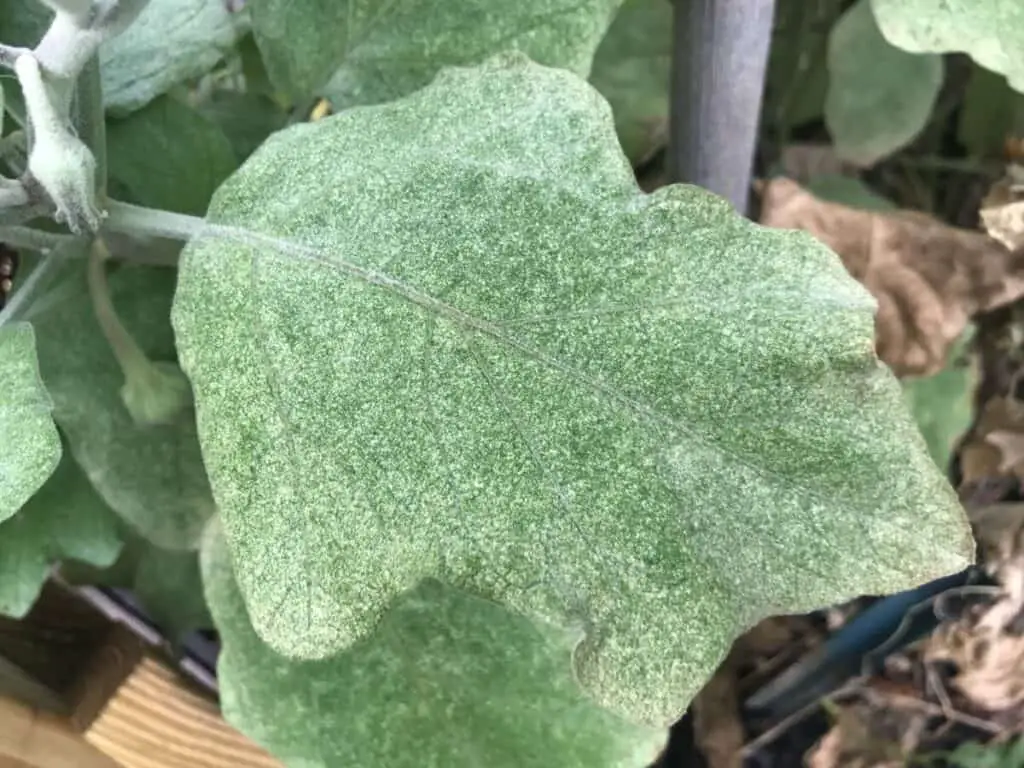
Eggplant: The good news about eggplants is that they’re incredibly hardy plants. Unlike tomato plants, which have wispier foliage, eggplant leaves are thick and tough and, much like okra, allow the plant to resist a host of predators. Last summer, I noticed several eggplants that were clearly infested by spider mites and flea beetles. Although I treated the spider mite infestations in other parts of my garden, I let things run their course with the eggplants. Over time, the foliage showed evidence of infestation, such as the hundreds of small holes created by flea beetles, but the plants themselves kept growing strong.
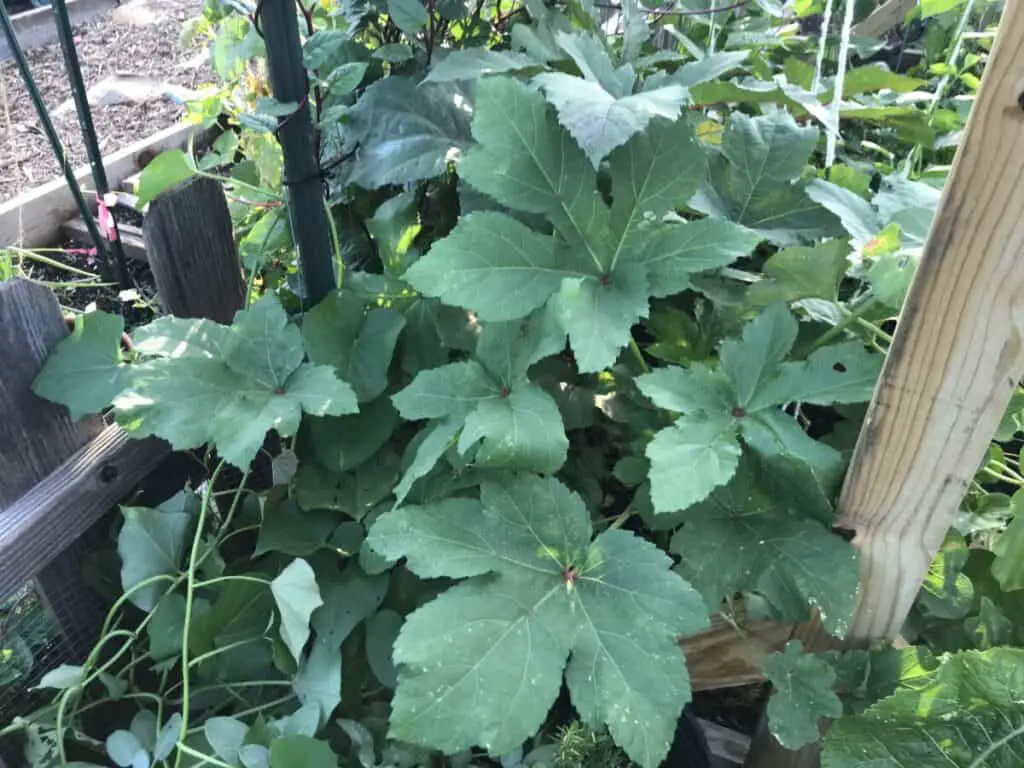
Okra: As anyone who’s ever grown okra will tell you, these are some of the toughest garden plants out there. With thick, sturdy stems and hardy, rough foliage, they can resist a whole host of predators. Last last spring, several of my okra plants showed signs of a spider mite infestation, but I wasn’t too worried. In fact, I didn’t even follow my treatment plan like I normally do because I knew these plants were tough. Within a few short weeks, and after a few spot treatments with my homemade neem oil spray, the okra were producing plentiful harvests and starting to grow quite tall while the spider mites seem to have completely disappeared.
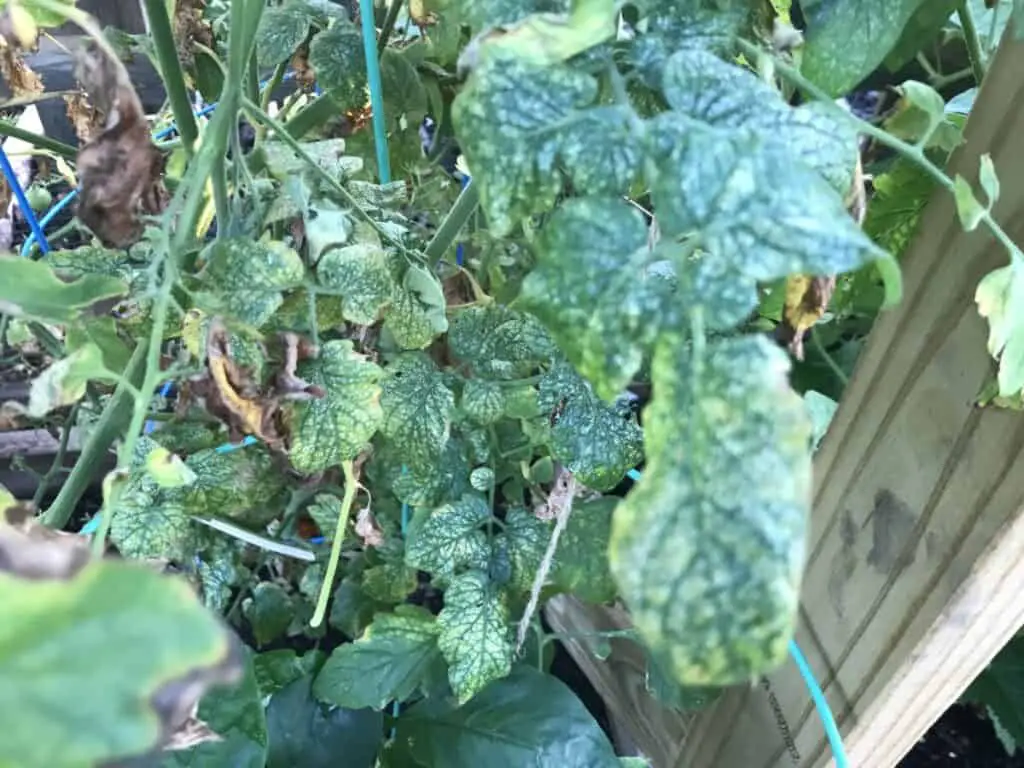
Peppers: This was perhaps the biggest gardening surprise this past year. In one bed, I had an enormous tomato plant growing right next to black-eyed peas and three varieties of bell peppers.
The tomato plant was monstrous, around 8 feet tall with sucker offshoots that had spread in each direction (since I didn’t prune any suckers on this particular plant). I had planted the black-eyed peas in June, primarily as a summer ground cover, and they were taking off right as a spider mite infestation took hold of the tomato plant.
Unfortunately, this coincided with a particularly busy period at work, and I didn’t follow my spider mite treatment regimen the way I normally do. Because of that, the tomato plant was a wreck by mid July, showing extensive spider mite damage, and the stippling effect spread to the black-eyed peas as well, which showed that the spider mites were migrating from the dying tomato plant to the still-thriving black-eyed pea plants.
Interestly enough, the spider mites left my peppers completely alone. The foliage of the Sungold tomato plant had grown up against, and in between, the foliage of the pepper plants, yet the spider mites hadn’t taken advantage of that foliar bridge. They simply avoided the peppers. Much like basil, I’ve seen people complain online about spider mites and pepper plants, but in my personal experience, spider mites seem to avoid peppers.
Companion Planting
If you’ve had a rough time with spider mites this year, consider a garden rotation that plants that spider mites love amidst plants that they hate.
This will do two things. First, you’ll encourage the spider mites to focus their energy on only a few select plants, which will give you time to attack them with organic foliar sprays. Second, you’ll ensure that a good portion of your bed remains completely free of spider mites. Even if you lose some plants to spider mites, you’ll still have others that continue to thrive throughout the growing season.
This past season, I had tomatoes growing on opposite ends of one bed. On the right side of the bed, a single, large tomato plant was surrounded by three bell pepper plants, basil, chives, and a marigold. On the left side of the bed, two medium-sized tomato plants were surround by okra, a cayenne pepper plant, and cowpeas.
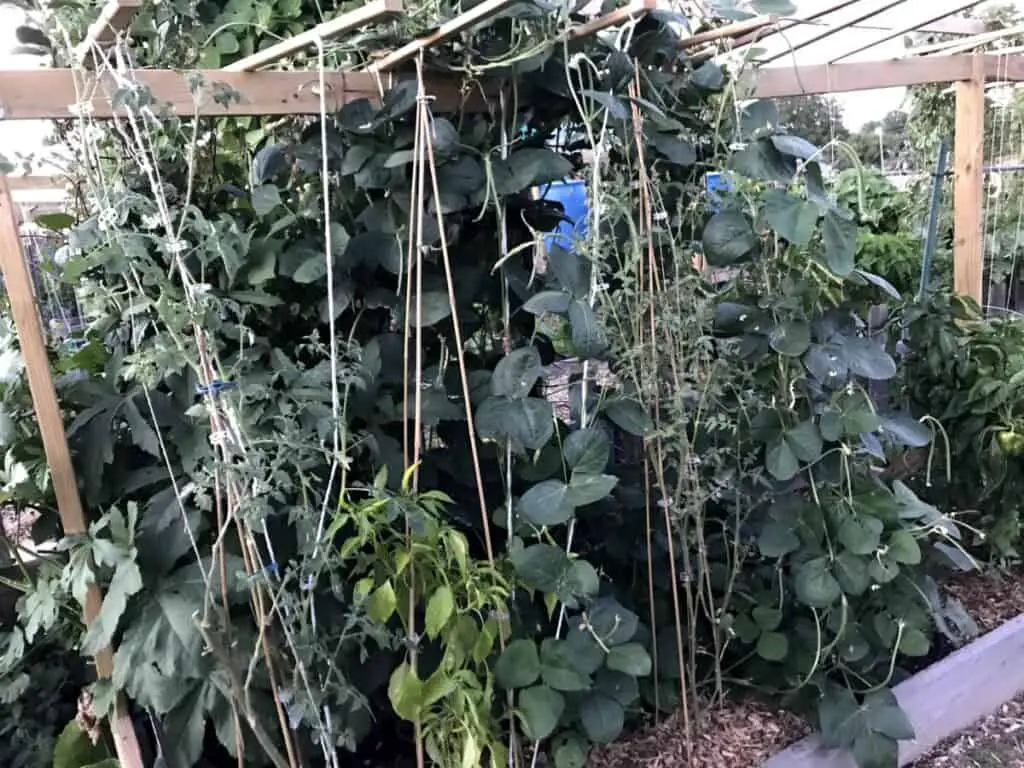
During a particularly busy few weeks, I didn’t pay very close attention to the bed, and the large tomato plant suffered from a heavy spider mite infestation. I didn’t treat it quickly enough and eventually pulled it out, but the tomato plants on the other side of the bed only showed slight signs of spider mite damage.
I followed my spider mite treatment plan with those plants–a treatment plan that I discuss in this article on neem oil sprays–and they weathered the early infestation just fine. Had I not had spider mite resistant plants in that bed, which created natural barriers between the tomato plants, I might have lost all of my tomato plants to that initial spider mite infestation.
If you know of any other plants that spider mites like–or plants that seem to resist or repel them–please let me know by emailing backyardgardengeek@gmail.com. I’d love to make my lists above as comprehensive as possible!
